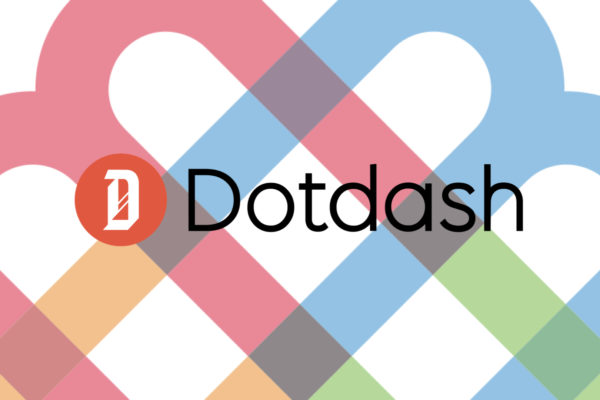Dotdash Meredith on digital, data, and display advertising in the post-cookie world
“We don’t need third-party cookies to be successful and we don’t need our user’s private information to help them achieve their goals. In our experience, first-party data and intent-driven contextual advertising beat third-party cookie-based advertising performance every time.”
At the end of 2021 two of the great institutions of US media joined together when Dotdash, the publishing unit of InterActiveCorp, acquired Meredith, the publisher of People, Better Homes & Gardens, Entertainment Weekly and many more digital and print brands. The new entity Dotdash Meredith claims to be the #1 digital and print publisher in the US boasting 40 high-profile that have an audience reach of over 188 million consumers monthly.
Among the team plotting a course for the new company is Alysia Borsa, its Chief Business Officer and President of Lifestyle. Alysia will be speaking at the 44th FIPP World Media Congress in June, and you can find out more on that here.
Alysia’s core role at Meredith prior to the acquisition was to completely digitise a company with a virtually unrivalled print legacy. More recently she set up the company’s ground-breaking Data Studio which uses data and technology to create new content opportunities for the company’s largest brand partners.
In this interview, she explains how her digital vision impacted almost every part of Meredith, why she believes that media companies are finally executing on the potential of the data they generate, and how recent company innovations have readied Meredith for the big changes in advertising that are in the pipeline.
Part of our: Meet the Speaker Series
Alysia Borsa, Dotdash Meredith
What has been your career trajectory to date? How did you end up at Dotdash Meredith and subsequently as Chief Business Officer and President of Lifestyle?
I came to media and publishing after having a career in technology, communications and consulting. During that time, I worked at Nokia, Comcast and Accenture, developing and executing strategies to grow new and legacy businesses, experience which would prove critical to the roles I have played over the past decade at Meredith Corporation, now Dotdash Meredith.
I originally joined Meredith to help build the company’s digital offering and to establish a centralised, company-wide data practice, which laid the groundwork for what is now one of the industry’s most robust first-party datasets. Over the years, I have touched nearly every facet of the organisation, overseeing digital strategy, content, products, technology, sales, marketing, e-commerce, and operations and held roles ranging from Chief Marketing & Data Officer to President of Digital.
In my new role at Dotdash Meredith, I am a part of the senior leadership team and oversee the business for our 20+ lifestyle brands, including the iconic Better Homes & Gardens (celebrating its 100th anniversary this year), REAL SIMPLE, Byrdie, InStyle, and more. Dotdash Meredith is the largest digital and print publisher in America, reaching nearly 200 million consumers every month and 95% of American women.
Your previous role was as President of Digital, what innovations did you introduce in that role? What was the key role of the Dotdash Meredith Data Studio?
“Our partnership with Walmart has grown substantially over the past few years and includes groundbreaking technology such as artificial intelligence-powered meal-planning and shoppable recipes”
As President of Digital, I worked to get Meredith more closely integrated with its largest advertising partners, leveraging our proprietary insights and building partnerships to help our businesses grow together beyond media.
Our partnership with Walmart, for example, has grown substantially over the past few years and includes groundbreaking technology such as artificial intelligence-powered meal-planning and shoppable recipes, a visual search tool and voice search using Google Assistant.
It also includes a variety of content including a shoppable magazine, a social commerce promotion on TikTok and programs like Make It Easy and Kid Foodology designed to personalise users’ content and advertisements.
In 2021, our digital advertising revenues surpassed those of our print magazines for the first time in our history – a major milestone in the company’s evolution as a cross-platform media publisher.
The launch of the Data Studio in 2020 was also a major achievement. We took our rich, exclusive data with massive scale in content-rich environments and built an in-depth 12,000+-term taxonomy, a proprietary identity graph and over 12 billion intent signals to achieve a comprehensive understanding of women and their intent. Today’s Dotdash Meredith Data Studio leverages our company’s vast proprietary first-party data, intent signals and predictive insights to inform marketing, product, and business strategies.
Do you think that more publishers are now fully understanding the importance of data and are reaping economic benefits from harnessing it?
Yes – I think publishers understand that the more we know about our consumers and their intent, the better we can answer their questions, inspire and entertain them. We must be transparent with consumers about how we’re capturing that first-party data and provide a compelling value exchange for consumers. We know the intent of our consumers – from looking to get a healthy meal on the table to buying a first home, new car, or refinancing their mortgage. We take our role as stewards very seriously because we are a trusted advisor to our consumers in every aspect of their lives.
One of your core achievements in your previous role was to oversee growth in digital advertising. Are you as confident that display advertising will continue to grow in the future in spite of recent changes by Apple and the upcoming shift away from third-party cookies by Google?
Yes. We don’t need third-party cookies to be successful and we don’t need our user’s private information to help them achieve their goals. In our experience, first-party data and intent-driven contextual advertising beat third-party cookie-based advertising performance every time.
And what do you see as the other key revenue strands for media brands? Are subscriptions the way forward? Do you think events will ever be as lucrative as they were prior to the pandemic?
“Our business model is built on intent, which doesn’t require a user to be logged in to deliver the right content and advertising to each consumer.”
Across our powerful portfolio of brands, we will have the fastest sites, with the best content and the most performant ads. We will continue to see traffic grow and deliver high-value content to our most loyal users. That said, we don’t imagine the majority of users will ever access our content via subscription; our business model is built on intent, which doesn’t require a user to be logged in to deliver the right content and advertising to each consumer.
We also have a healthy, diversified revenue mix beyond media. For example, we are the world’s #2 licensors (second only to Disney) for the sixth year running. We also have incredibly strong e-commerce and performance marketing capabilities, driving billions of dollars of sales for our partners.
What other changes – good or bad – has the pandemic brought to Dotdash Meredith?
We help nearly 200 million people every month make decisions, take action and find inspiration. We learned during the pandemic just how important being that trusted resource is to our audiences. We were thrown into helping newly homebound parents manage the struggles of work, meal prep, wellness and entertainment. Usage across our properties surged and we take that responsibility very, very seriously.
The pandemic has upended many consumer behaviours, as well. Halloween shopping now starts in August and gardening content engagement accelerates in March. Seasonality may no longer be a relevant construct for marketers. We’re leaning into our predictive insights to help marketers understand the changing consumer landscape so they can always be present in moments of high intent–regardless of the traditional marketing calendar.
There’s a raft of new technologies and innovations that are on the horizon – from blockchain and NFTs, through to the metaverse and AI. Is it still too early for publishing companies to explore the opportunities they present? Where does Dotdash Meredith stand on this?
We will test and innovate, not for the sake of it, but where we see it will help deliver better content, experiences or products for our consumers. For example, we have been using AI to predict trends and deliver personalised experiences for our consumers and this is an area of innovation that we will continue to develop.
And what excites you most about 2022? Where new is Dotdash Meredith heading this year?
I am excited to realise the full potential of bringing together an unmatched portfolio of brands, and being even more effective in helping consumers answer questions, make decisions and find inspiration. Expanding our commerce capabilities against this intent is an obvious focus for us. Our commerce business is built on our incredible testing capabilities. We are cooking and sampling recipes in our 50 kitchens, testing new gadgets in our tens of thousands of square feet of labs, and growing plants in our gardens – taking photos and videos, and building our database as we undertake every one of these efforts. We believe Dotdash Meredith can be as good at helping people decide what to buy as we are in creating expert and resourceful content.
We also expect to continue to deliver performant advertising solutions based on our intent-driven business and to expand our advertising partnerships in every major category – retail, food, home, health, finance, travel, tech and entertainment.
? To see the latest speaker line-up for this June’s FIPP World Media Congress, along with details of the schedules, click here.










